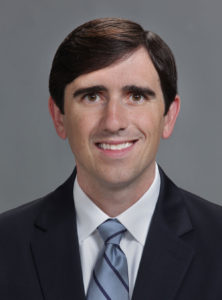ACL Revision Surgeon

Are you an athlete who participates in sports that involve jumping or quick stopping? If so, you may be at risk of tearing your anterior cruciate ligament, or ACL. In most cases, when an ACL reconstruction fails an ACL revision surgery is recommended to restore anatomy and function. ACL revision surgeon, Dr. Robert Boykin provides diagnosis and both surgical and nonsurgical treatment options for patients in Asheville who have suffered a failed ACL reconstruction. Contact Dr. Boykin’s team today!
Knee Anatomy Overview
The knee joint is stabilized by four major ligaments. These ligaments may also be referred to as “restraints” and include the anterior cruciate ligament (ACL), posterior cruciate ligament (PCL), medial collateral ligament (MCL), and posterior lateral corner (PLC) complex. The anterior cruciate ligament is in the front of the knee joint (anterior) and crosses (cruciate) in front of the PCL. The main function of this ligament is to prevent the bone in the leg (tibia) from moving forward relative to the bone of the thigh (femur). The ACL also contributes to providing stability of the knee with rotational movements or twisting.
What is an ACL Tear?
The ACL is the most commonly torn ligament in the knee and responsible for a significant amount of lost playing time in athletes. In many cases, this injury is associated with athletic participation but may also happen with certain other traumatic injury patterns to the knee. At the time of injury some patients report hearing a pop, experience pain in the knee, and note swelling of the knee joint. Due to the environment of the ligament and the nature of injury, the ACL typically does not heal on its own. In many patients an ACL reconstruction is performed to restore function and stability to the knee. While the procedure is very successful, some patients will have a retear of the ACL by breaking the reconstructed graft. This once again leaves the knee unstable and must be carefully addressed to restore function to the knee. In cases of an ACL re-tear, Dr. Boykin is an expert at preforming ACL revision surgery for patients in Asheville, Arden, Fletcher and surrounding communities.
What does an ACL Reconstruction Fail?
While the exact cause for a retear is not always fully understood it may be due to a new trauma, returning to sports too early, failure to wear the brace, poor alignment of the entire leg (most common in patents who are bow legged), or simply failure of the graft or fixation. A revision ACL reconstruction is a more difficult procedure due to the fact that at least one surgery has already failed and that the devices used to fix the first ACL are still in place in the knee. A careful examination with new imaging is performed to help determine if there are any factors predisposing the patient to ACL tears and to look at the quality of the bone in the knee.
Revision ACL Reconstruction Overview
In certain cases a revision ACL reconstruction can be performed immediately using either a graft from the patient (patellar tendon, hamstrings) or a donated graft. The decision for type of graft is made based on what graft the patient previously had and a discussion of the risks and benefits of each with Dr. Boykin. In other cases, if the quality of the bone is not good from the first surgery, it may be necessary to perform a staged procedure. This consists of a bone grafting procedure to fill the areas with new bone, followed by a revision ACL reconstruction with a graft 4-6 months later. In patients who are found to have a predisposing factor, such as malalignment of the leg, this is treated with a first surgery and the revision ACL reconstruction is done at a later time. Dr. Boykin believes it is of the utmost importance to address all other factors that could be responsible for the failure of the first surgery before proceeding with a revision ACL reconstruction to give the patient the best chance of having a successful surgery.
How Successful is ACL Revision Surgery?
The results of primary ACL reconstruction are highly successful in terms of restoring function and allowing patients to return to their activities. In cases of a revision reconstruction, the results are also very successful but less so than a primary surgery due to the complexity of the injury and procedure. Therefore it is important that a surgeon with experience in complex knee surgery performs the revision surgery.
Recovery Following Revision ACL Reconstruction
After surgery, patients are placed into a brace and immediately started on a detailed rehabilitation program. Patients typically use crutches for 2 weeks and may use a functional type brace once they return to activities for the first year, depending on specific case. Full return to activities is anticipated around 9 to 12 months in the majority of cases.
For additional information on revision ACL reconstruction surgery, or to learn more about common knee ligament injuries, please contact the Asheville, Arden, Fletcher and surrounding North Carolina communities, orthopedic surgeon Robert Boykin, MD.
